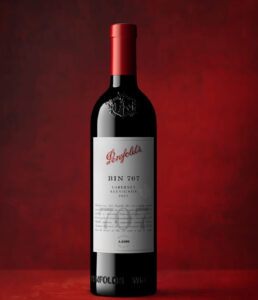Penfolds Bin 620 Cabernet: A Comprehensive Guide
Introduction
Penfolds Bin 620 Cabernet Sauvignon-Shiraz is a legendary Australian wine, crafted only in exceptional vintages. First released in 1966 and recreated in 2008, it hails from Coonawarra’s prized terra rossa soils, famed for producing structured, age-worthy reds. A sibling to Penfolds’ iconic Grange, Bin 620 combines Cabernet Sauvignon’s elegance with Shiraz’s power, earning acclaim for its complexity and rarity. With fewer than 1,000 cases made per release, it’s a collector’s gem. This article explores its history, winemaking secrets, and answers key questions about pricing, aging, and how it stacks up against Penfolds’ other icons.

What Is Penfolds Bin 620 Cabernet?
Penfolds Bin 620 Cabernet is a ultra-premium Coonawarra blend of Cabernet Sauvignon (80–90%) and Shiraz (10–20%), produced only in standout vintages. The 1966 debut celebrated Coonawarra’s centennial, while the 2008 revival honored the region’s resilience post-drought. Made under Chief Winemaker Peter Gago, it undergoes 18–20 months in American oak, marrying dark fruit flavors with savory spice. Bottled in Penfolds’ signature understated style, it retails for 1,500–2,500, rivaling Grange in prestige. Its scarcity and pedigree cement its status as a “liquid trophy” for investors and enthusiasts.
Key Features of Penfolds Bin 620 Cabernet
-
Exceptional Vintages Only: Released twice in 50+ years (1966, 2008).
-
Coonawarra Terroir: Terra rossa soils lend structure and minerality.
-
Cabernet-Shiraz Blend: Balances Cabernet’s tannins with Shiraz’s richness.
-
Extended Oak Aging: Matured in American hogsheads for depth.
-
Collectibility: Low production (under 1,000 cases) drives auction demand.
People Also Ask: Top Questions About Penfolds Bin 620 Cabernet
1. Why Is Bin 620 So Rare?
Penfolds Bin 620 Cabernet for extraordinary Coonawarra vintages. Only two releases exist: 1966 and 2008. Limited production (600–900 cases) and decades between bottlings amplify its mystique.
2. How Does It Compare to Grange?
Grange is Shiraz-dominant and multi-regional, while Bin 620 highlights Coonawarra Cabernet. Both age brilliantly, but Grange commands higher prices ($4,000+). Bin 620 offers a rarer, terroir-driven alternative.
3. Where Can I Buy Bin 620?
Primary releases sell via Penfolds’ mailing list or luxury retailers. Secondary markets like Langton’s Auction or Wine-Searcher list bottles, often priced 20–50% above retail.
4. What’s the Aging Potential?
Penfolds Bin 620 Cabernet evolves for 30+ years. The 1966 remains vibrant, showcasing leather and truffle notes. The 2008 will peak around 2040, with tannins softening into silky complexity.
5. Is It Worth the Investment?
Yes, for patient collectors. The 1966 now sells for $10,000+ at auction. The 2008 has doubled in value since release. Rarity and Penfolds’ brand equity drive appreciation.
6. What Awards Has It Won?
The 2008 scored 99/100 from James Halliday and 97+ from Robert Parker. Wine Spectator praised its “power and precision,” ranking it among Australia’s finest Cabernet blends.
7. How Is It Made?
Grapes are handpicked, fermented separately, then blended. American oak aging integrates flavors, while Penfolds’ multi-vineyard approach ensures consistency. No fining or filtration preserves integrity.
8. What Food Pairings Work Best?
Pair with rich dishes: slow-cooked lamb, wagyu beef, or aged hard cheeses. Decant 2+ hours before serving to unlock its full spectrum.
9. Why Coonawarra?
Coonawarra’s cool climate and iron-rich terra rossa soils yield Cabernet with intense cassis, mint, and earthy notes—ideal for long-term aging.
10. Will Penfolds Release More Vintages?
Unlikely soon. Bin 620’s exclusivity hinges on Coonawarra’s climatic perfection. Future releases depend on exceptional growing seasons and winemaker discretion.
Conclusion
Penfolds Bin 620 Cabernet-Shiraz epitomizes Australia’s winemaking prowess, blending Coonawarra’s terroir with Penfolds’ technical mastery. Its scarcity, aging potential, and critical acclaim make it a crown jewel for collectors, though its steep price and limited access pose barriers. As climate change reshapes viticulture, Bin 620’s infrequency may grow, further elevating its allure. For those seeking a taste of Australian wine history—or a shrewd investment—Bin 620 delivers, provided you’re willing to wait decades for its full splendor.


Reviews
There are no reviews yet.